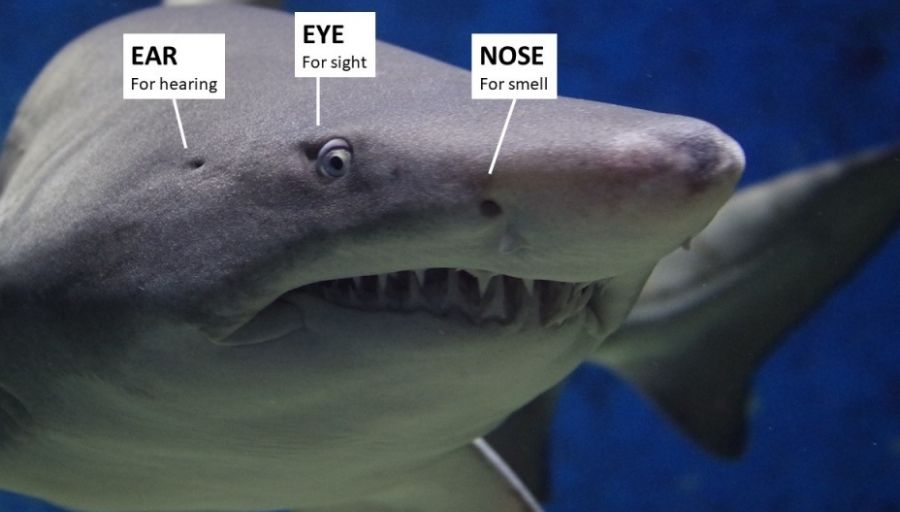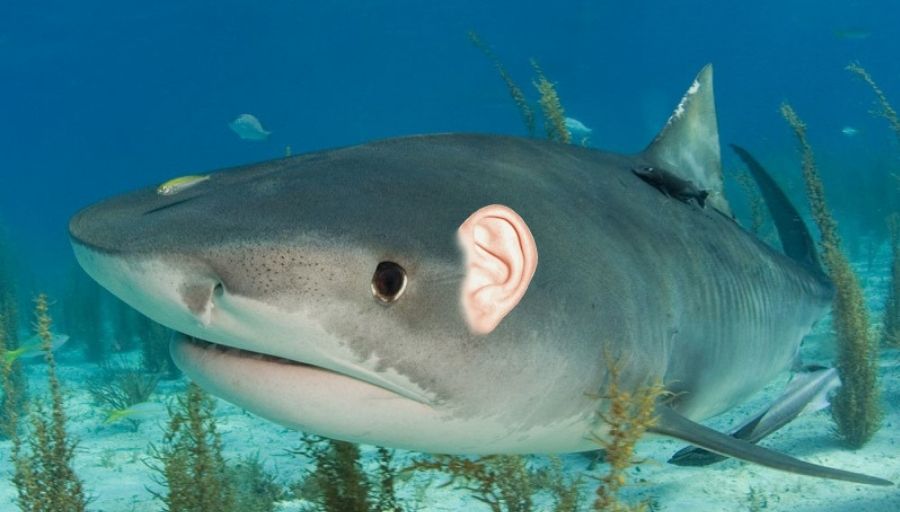Are you wondering if sharks have ears and how they hear underwater? The shark’s ability to hear and the extent to which this ability extends are difficult to gauge by external media and research.
However, it is clear that they are able to hear, perhaps even quite acutely, as many sharks seem to use this sensory perception to track prey that can be miles away.
Do Sharks Have Ears?
Yes, sharks have ears they are entirely internal. There is a small opening on both sides of the shark’s head, which leads directly to the inner ear via a thin passage. Many people believe the spiracles to be the ear.
However, these are related to respiration and have nothing to do with the animal’s ability to hear or balance. The ear is embedded within the hard cartilaginous frontal skull or chondrocranium. The ear does not only play an integral role in the shark’s ability to hear, but also in its balancing and equilibrium.
Together with the lateral line, this is termed the acoustico-lateralis system for its dual hearing and balancing functionality.

How Do Sharks Hear?
The shark’s inner ear is a membranous labyrinth; a group of ducts and sacs, filled with endolymph. In the case of sharks, this endolymph comprises mainly of seawater that enters through the endolymphatic ducts.
This membranous labyrinth is protected and sustained by a cartilaginous labyrinth around it; a series of canals that are filled with fluid and supplied by the perilymphatic ducts. The endolymphatic ducts lead into the sacculus, which is, in turn, home to the lagena.
The walls of the sacculus are made up mainly of otoliths. Otoliths are tiny particles that consist of a gelatinous matrix and calcium carbonate. Sensory hairs (called cilia) are attached to the otoliths.
The klinocilium is a longer hair cell, which extends into the cupola. The cupola is partly exposed to the external environment and is jelly-like in nature.
Therefore, when there are sound vibrations in the water, the jelly wobbles and allows the klinocilium to receive important information and transmit these audible sensations to the brain.
The three cartilage tubes within the inner ear are D-shaped and lie at right angles to one another. Each tube senses vibrations that are parallel to its orientation only.
So, placed at right angles to one another, they are, together, able to detect sound in all directions. This means that sharks can sense movement and acceleration in all three dimensions of the water around it.
As the shark begins to lose its equilibrium and balance, the endolymph fluid and the otoliths slow down slightly. The modified sensory hair cells detect this lag and send signals to the brain that enable the creature to correct its balance.
This is all done within split seconds and without the conscious knowledge of the animal. It is particularly important for the shark to be able to maintain its balance in this way because the ocean depths do not always allow for its inhabitants to know where the surface of the water and the ocean bed are in relation to the animal’s position.
Of course, sounds are vibrations too. So, in the same way that the sensory hairs bend and receive messages regarding the banking of the shark’s body, they also sense sound vibrations and provide the brain with important information regarding intensity, distance, and so on.
In so doing, the shark is kept acutely aware of threats, obstacles and potential prey.
